Filmmaker Azazel Jacobs calls this a story about stolen love and stolen identities shot on stolen film. He’s the son of Ken Jacobs (Star Spangled to Death), with some of his pa’s anarchic spirit, and because he apparently stole good 35-millimeter stock, he doesn’t have to worry that much about the story anyway. The slender premise — two guys are named Rodolfo, one of whom gets renamed Depresso by the girlfriend of the other — seems mainly an excuse to hang out with these people, and it’s a tribute to Jacobs’s skill that this is enough. He knows how to put air around his characters, pace their movements, and chart their interactions in various locations, and when the heroine starts dancing at one point, she’s so good that I wanted to cheer. 77 min. (JR)
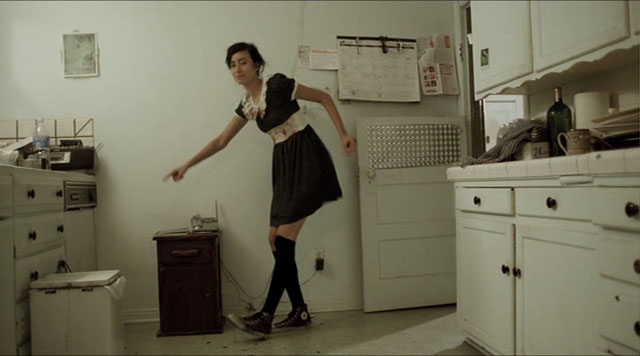 Read more
Read more
The following essay was commissioned by Pere Portabella himself in 2009 when he was planning to include some written materials with a DVD box set of his complete works — a box set that he eventually decided to release four years later without any written material. This essay has subsequently appeared in my 2010 collection Goodbye Cinema, Hello Cinephilia and, in Spanish translation, in El mundo in March 2013. — J.R.
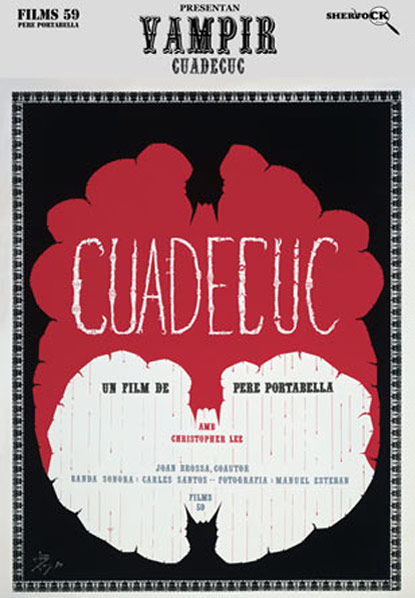
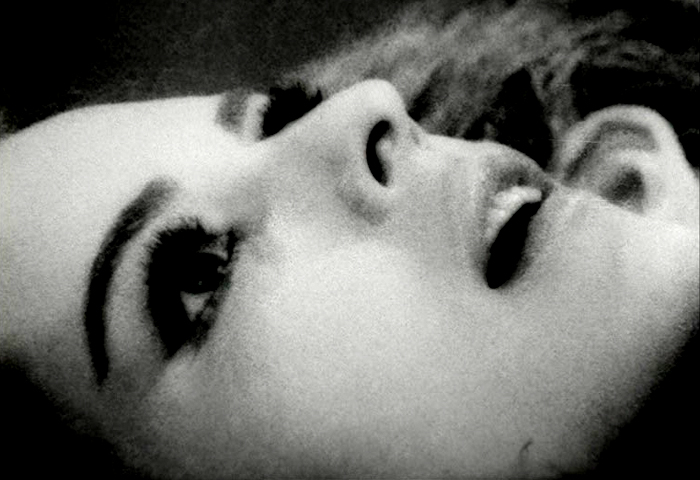
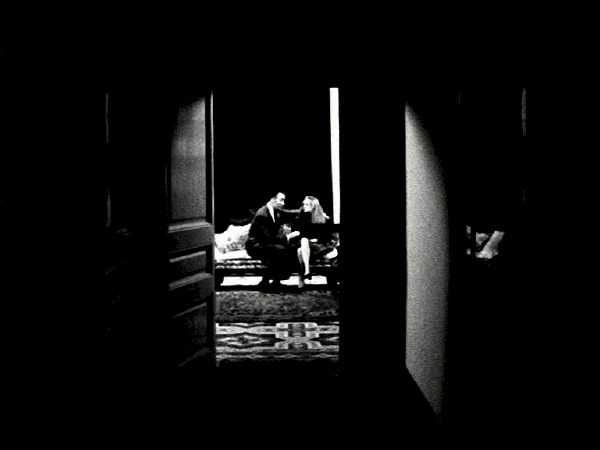
Filmmakers who reinvent the cinema for their own purposes generally operate under certain distinct handicaps. In a few privileged cases (Griffith, Feuillade, Chaplin, Hitchcock) it’s the cinema itself, as art form and global institution, that winds up readjusting to the reinvention. But what happens more often is either a prolonged banishment of the filmmaker’s work from public awareness or a protracted series of misunderstandings until (or unless) the new rules are recognized, understood, and assimilated.
In the case of Pere Portabella, where some of the principles of production, distribution, and exhibition have been reinvented along with some concepts of reception, the frequent time lags between completed projects have only exacerbated some of the difficulties posed to uninitiated viewers. Interestingly, these difficulties have relatively little to do with an audience’s receptivity to the films themselves and a great deal to do with an audience discovering the very fact of their existence. Read more
From Kevin Lee’s web site, posted circa 2004. — J.R.
The following questions for Jonathan Rosenbaum were compiled by myself and esteemed colleagues at the IMDb Classic Film Board. They were e-mailed to Rosenbaum on the occasion of the release of his book ESSENTIAL CINEMA. His responses appear after each question.
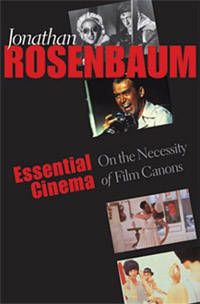
Q- I was actually quite surprised when I saw that your book argued for the necessity of canons, given your previous criticism of the AFI’s top 100 lists and how it institutionalizes popular taste in much the same way as any canon does. Also, you testify to the profound affect that the Sight and Sound top 10 list had on you during your college years (as was the case for me) — but couldn’t one say that this, or any list, may be as limiting in its own way (in the perspective it espouses) as the AFI list? If the goal is to encourage people to see as many things as possible, I wonder if any canon or list alone is up to that task. Would you agree to that the problem is not in these canons or lists but in our attitudes towards them (for example, I don’t think it was the virtue of the Sight and Sound list in itself, but your attitude towards it, that made it worthwhile)? Read more
Written for Criterion’s DVD release of F for Fake in 2005. — J.R.

There were plenty of advantages to living in Paris in the early 1970s, especially if one was a movie buff with time on one’s hands. The Parisian film world is relatively small, and simply being on the fringes of it afforded some exciting opportunities, even for a writer like myself who’d barely published. Leaving the Cinémathèque at the Palais de Chaillot one night, I was invited to be an extra in a Robert Bresson film that was being shot a few blocks away. And in early July 1972, while writing for Film Comment about Orson Welles’s first Hollywood project, Heart of Darkness, I learned Welles was in town and sent a letter to him at Antégor, the editing studio where he was working, asking a few simple questions—only to find myself getting a call from one of his assistants two days later: “Mr. Welles was wondering if you could have lunch with him today.”
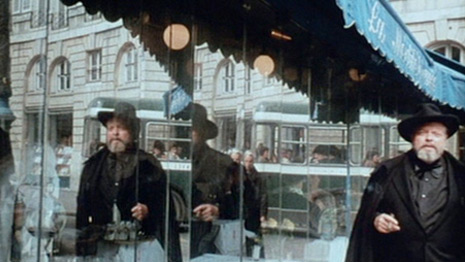
I met him at La Méditerranée — the same seafood restaurant that would figure prominently in the film he was editing — and when I began by expressing my amazement that he’d invited me, he cordially explained that this was because he didn’t have time to answer my letter. Read more
Written originally for Trafic no. 12 (Fall 1994), where it appeared in French translation, translated by Bernard Eisenschitz; all three letters first appeared in English in Persistence of Vision No,. 11, 1995. — J.R.


June 13, 1994
Dear Bill,
It’s good to have all your multifaceted thoughts about It’s All True, which makes your letter worth the long wait. I especially value what you have to say regarding the political implications of the film in the 1940s as well as the 1990s, because it seems that those implications have mainly eluded critics in both decades. As you well know, it wasn’t until Robert Stam published “Orson Welles, Brazil, and the Power of Blackness” in the seventh issue of Persistence of Vision (1989), with corroborating essays by both Catherine and Susan Ryan, that it finally became clear, forty-odd years after the event, that part of what was rattling so many studio executives and Brazilian government officials alike about Welles’s behavior in Rio was his particular interest in blacks. Maybe you’re right that he wasn’t a radical, but if It’s All True had been completed and released in the early 1940s, it still might have offered a radical precedent: three Latin American stories focusing on non-white heroes. Read more
Written originally for Trafic no. 12 (Fall 1994), where it appeared in French translation, translated by Bernard Eisenschitz; all three letters first appeared in English in Persistence of Vision No,. 11, 1995. — J.R.


June 7, 1994
Dear Jonathan,
Sorry to have been so long replying. As you say, much has happened since you wrote your letter. We both started out years ago in a series of polemical articles to correct received ideas of Welles, and we seem to be making progress. This Is Orson Welles and It’s All True will be more widely read and seen than those articles ever were. Already Richard Combs, writing about f for fake in the January–February 1994 Film Comment, acknowledges the thesis of Welles the independent filmmaker advanced by you in “The Invisible Orson Welles” as a corrective to the idea of Welles the great failure, then proceeds to propose a new theory of the work, with failure of another kind inscribed in it from the start. That article would have been unthinkable a few years ago, when what might be called the vulgar theory of failure was still dominant.
The work on the Welles legacy is going well: Oja is set to co-direct a documentary that will include several of the important fragments; The Deep and The Other Side of the Wind may be finished in the next couple of years, and hope springs eternal where The Merchant of Venice is concerned. Read more
Written originally for Trafic no. 12 (Fall 1994), where it appeared in French translation, translated by Bernard Eisenschitz; all three letters first appeared in English in Persistence of Vision No,. 11, 1995. The version here, including my introduction, comes from Discovering Orson Welles. — J.R.

This chapter -— the longest in my 2007 book Discovering Orson Welles, and in some ways my favorite -— was originally written for the French quarterly Trafic, and in fact was the first thing I ever wrote specifically for that magazine. The late Serge Daney (1942–1994) —- whom I’d known since his stint as editor of Cahiers du cinéma, when he’d gotten me to serve briefly as its New York correspondent (after Bill Krohn had shifted from that post to the same magazine’s Los Angeles correspondent) -— died of AIDS not longer after launching Trafic, and by my own choice, my first contribution, a memoir about working for Jacques Tati (see “The Death of Hulot” in my collection Placing Movies), was something I’d already written for and published in Sight and Sound. My second contribution was my brief introduction to Orson Welles’s “Memo to Universal”, an “outtake” from This Is Orson Welles that had been accepted by Serge’s coeditors (Raymond Bellour, Jean-Claude Biette, Sylvie Pierre, and Patrice Rollet) during Serge’s illness. Read more
From Sight and Sound (June 2011). Portabella continues to be the most flagrantly unseen and overlooked of major contemporary filmmakers, for reasons suggested in this sketch. — J.R.
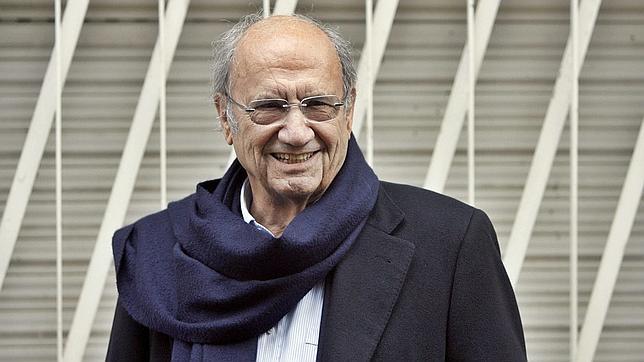
Jonathan Rosenbaum voyages into the elusive and intriguing worlds created by Spanish filmmaker Pere Portabella
Among the lost continents of cinema — major films and artists that have perpetually eluded our grasp because they fall outside the usual institutional frameworks that we depend upon to ‘keep up’ with cinema — there are few contemporary figures more neglected than Catalan filmmaker Pere Portabella.
Born into a family of industrialists in Barcelona in 1929, Portabella has remained closely tied to that city’s art scene for most of his life, especially as a patron and friend of other Catalan artists. One of these was Joan Miró, the focus of a major retrospective at the Tate Modern this summer and the subject of five of Portabella’s shorter fiIms from the late 1960s and early 70s. (The two I’m most familiar with are Miró L’Altre, chronicling the artist’s painting and subsequent erasing of a mural at the Colegio de Arquitectos de Catalunya, and Miró 37/Aidez L’Espagne, which similarly explores a ‘making’ and ‘unmaking’, this time of Spain itself during the mid-1930s, via newsreel footage.) Read more
From the Chicago Reader (April 6, 2007). — J.R.

Quentin Tarantino and Robert Rodriguez’s celebration of 70s-style sleaze, 191 minutes long including a short intermission, seems ideally suited for gleeful, mean-spirited 11-year-old boys who can sneak into this double bill despite the R rating. I enjoyed the invented trailers the directors fold into the mix, but despite the jokey missing reels, these two full-length features are each 20 minutes longer than they need to be, and neither one makes much sense as narrative. Rodriguez’s Planet Terror is virtually nothing but gross-out gags involving castration, dismemberment, mass murder, zombies, and Osama bin Laden. Tarantino’s Death Proof starts off as a meandering look at Austin’s Tex-Mex joints — there’s more gab here than in any of his work since Reservoir Dogs — then gravitates into a blend of Faster, Pussycat! Kill! Kill!, Beyond the Valley of the Dolls, and stunt-driving movies, culminating in some well-filmed action and more celebratory killing. (Making us feel good about enjoying gory mayhem — or in my case, at least trying to do that — has always been his specialty.) With Rose McGowan, Freddy Rodriguez, Josh Brolin, Kurt Russell, Rosario Dawson, and Zoe Bell. (JR)
 Read more
Read more
From Cineaste, Summer 2007. — J.R.
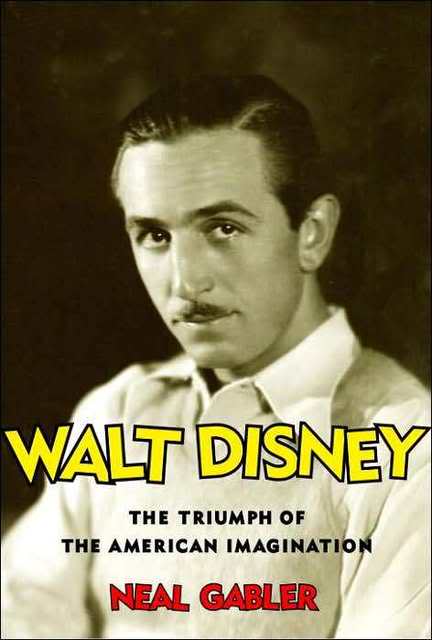
Walt Disney:
The Triumph of the American Imagination
by Neal Gabler. New York:
Alfred A. Knopf, 2006. 851 pp.,
illus. Hardcover: $35.00.
This is the first book by Neal Gabler since his magisterial and eye-opening An Empire of Their Own: How the Jews Invented Hollywood (1988) that hasn’t seriously disappointed me, though I didn’t warm to its virtues right away. His 1994 biography of Walter Winchell (Winchell: Gossip, Power and the Culture of Celebrity) had less of an impact on me than the 1971 journeyman’s effort of Bob Thomas (which I also preferred to Michael Herr’s 1990 musings on the subject), while Life, The Movie: How Entertainment Conquered Reality (1998), which I barely remember now, felt at the time like all windup and no delivery. And one clear limitation of this hefty volume from the outset, in spite of its strengths, is that Gabler can’t function very effectively as either a critic of Disney’s films or as a historian of Hollywood animation; his talent lies elsewhere.

Given Gabler’s privileged access to Disney files and papers, this may be the closest thing to an authorized biography that we can expect to get, but it doesn’t exactly add up to an apologia — even though it refutes charges of Disney being anti-Semitic, and, apart from occasionally conceding that he was mainly a passionately anti-union Goldwater Republican, tends to depoliticize him. Read more
Age is… Re:Voir Video


Army Criterion Eclipse


Jauja Cinema Guild


Letter from Siberia (Blu-ray included in the Chris Marker Collection) Soda Film + Art


Moana with Sound Kino Lorber


Despite (or is it because of?) the disorderly quirks of commerce, ideology, and opportunity, we all occupy disparate time frames, so I’ve unapologetically cited, in alphabetical order, five imperishable films that I happened to encounter for the first time in 2015, all of them in digital editions worthy of their achievements.
Dwoskin’s last film – a satisfying conclusion to a remarkable career – comes from the same label that afforded me my first look at Marcel Hanoun’s remarkable 1966 L’authentique procés de Carl-Emmanuel Jung with English subtitles.


Army is a wartime propaganda feature subverted into a pacifist lament, Jauja a haunting medieval western (or southern) time-bent into a luscious advance in Alonso’s art.
Letter from Siberia, even without the benefit of the French version promised on its jacket, is a delightful early essay film showing its author’s wit, literary gifts, and photojournalistic richness in optimal form, enhanced by a superb Roger Tailleur essay.
And Moana with sound is a seemingly unpromising but beautifully realized re-edition and further enrichment of the Flahertys’ early masterpiece, launched by their daughter Monica and restored by their great-grandson Sami van Ingen and Bruce Posner. Read more
Here are three of the 40-odd short pieces I wrote for Chris Fujiwara’s excellent, 800-page volume Defining Moments in Movies (London: Cassell, 2007). Each one of these entries devoted to “scenes” has something to do with imaginatively combining animation with live-action. — J.R.
***
1957 / Will Success Spoil Rock Hunter? –– Rock Hunter dances through his empty office at night to an offscreen chorus (“Mr. Successful, You’ve Got it Made”).
U.S. Director: Frank Tashlin. Cast: Tony Randall.
Why It’s Key: In a key satire of the 50s, a Hollywood dream overtly springs to life inside a Hollywood dream.
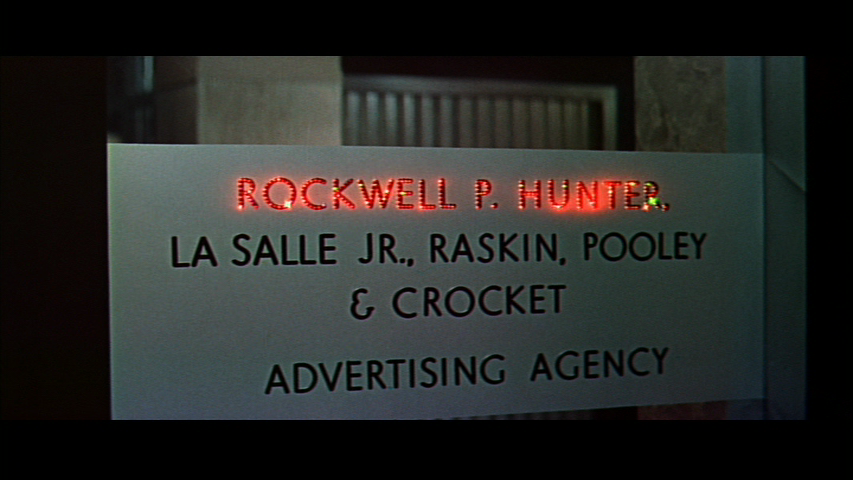

Madison Avenue adman Rockwell P. Hunter (Tony Randall) signs movie star Rita Marlowe (Jayne Mansfield) to endorse Stay-Put lipstick, thereby making his company a fortune and eventually turning him into first a first a vice president at the ad agency with a key to the executive washroom, then the new president. Before long, even though his alienated fiancée has broken off with him in disgust, he’s clearly “got it made” —- a phrase that he and this movie keep repeating so many times, in so many different ways, like a desperate mantra, that it begins to sound increasingly sinister. Perhaps the most pertinent gloss on this is offered to him by the company’s former president (John Williams), who has meanwhile happily left advertising for horticulture and offers his gloss as a kind of warning: “Success will fit you like a shroud.” Read more
From the Chicago Reader (January 5, 2007). — J.R.


A taciturn ex-convict (nonprofessional actor Argentino Vargas) leaves prison after a 20-year sentence and crosses a tropical forest by boat and on foot to find his daughter. This 2004 feature is the second by Lisandro Alonso (La Libertad), a singular and essential figure of the Argentinean new wave; he’s not quite the minimalist some claim, but he can make the simple act of filming feel so monumental that storytelling seems secondary. The hero’s crime, though indicated in the film’s title and opening shot, is acknowledged only fitfully in the spare dialogue, and his killing and gutting of a goat is shown with the same matter-of-factness as his visit to a prostitute. Vargas and the wilderness are such great camera subjects that a sense of quiet revelation is nearly constant. In Spanish with subtitles. 82 min.
 Read more
Read more
Writer-director Neil Burger follows his skillful debut feature, the pseudodocumentary thriller Interview With the Assassin (2002), with this spellbinding tale set in Vienna at the turn of the 20th century. Adapted from a Steven Millhauser story, it involves a mysterious magician (Edward Norton) and his amorous attachment to a duchess (Jessica Biel) who’s coveted by the crown prince (Rufus Sewell). This lush piece of romanticism may seem antithetical to Burger’s previous film, but both share a Wellesian integration of the viewer’s imagination and an equally Wellesian preoccupation with power. Paul Giamatti, at his best, plays a police inspector who serves as an audience surrogate; the effective score is by Philip Glass. PG-13, 110 min. Century 12 and CineArts 6, River East 21, Webster Place.
Art accompanying story in printed newspaper (not available in this archive): August 18, 2006. Read more
From the Chicago Reader (October 4, 2007). — J.R.

I’d like to think Elaine May had it written into her contract that the Farrelly brothers could remake her most brilliant comedy (1972) only if they left her name out of the press materials. She’s lucky to go uncredited (Neil Simon, who wrote the original script, is less fortunate), because you can’t do character-driven comedy without characters, and this one has only grotesques who change traits from moment to moment. Given the joyless vulgarity and absence of laughs, the frenzied changes in locales and character types hardly matter. A guy who sells sporting goods (Ben Stiller) gets married, drives south with his bride (Malin Akerman) on their honeymoon, and promptly falls in love with another woman (Michelle Monaghan) while discovering he hates his wife, but the ethnic humor that gave May’s movie its charge is replaced by crass mean-spiritedness. If I were in movie hell, I’d rather see Good Luck Chuck again than return to this atrocity. R, 115 min. (JR)

Read more




































